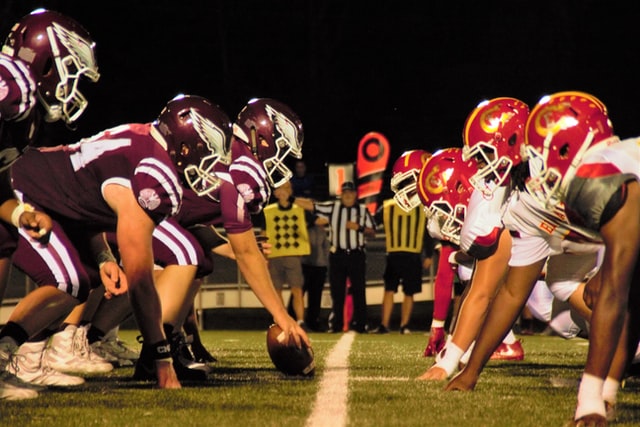The dimensions are applied at every level, from high school football through the NCAA and up to the NFL. How many acres of soccer fields, and what are the regulations to follow.
Across all levels of competition, there are two constants: 120 yards (360 feet) of length and 53 1/3 yards (160 feet) of width. The field is 100 yards long, with each side having a 10-yard-deep end zone. A football field is 57,600 square feet, or 1.32 acres, in size. Hash markings measure 100 yards, with a yard line every five yards and a field number every ten yards (on both sides, near the sidelines).
As a result of the first rule modifications in 1933, those hash markers were first seen on professional football fields, marking one of the first significant departures from college fields.
Each play begins at the hash marks closest to the finish of the previous space.
Unless the previous play ended outside the hash marks, such as on the sideline. As a result, there is more room for ball carriers to spin and move around defenders with less space between sets of hash marks and more distance between the hashes and the sidelines.
The width of high school, college, and NFL fields are all the same.
The distance between the two sets of hash marks is the sole variable that varies by level. The hash marks for high school football are 53 feet, 4 inches apart. In college, that distance is reduced to 40 feet, and it is reduced to 18 feet, 6 inches in the NFL.
The crossbar is 10 feet high, and the posts on either side are another 20 feet tall, bringing the total height of the goalposts to 30 feet. The goalposts are 18.5 feet apart in NCAA and NFL games, whereas high school goalposts are 23 feet, 4 inches apart.
Besides, a yellow line 6 feet behind the solid white border will demarcate a separate area for coaches, behind which all players must remain, except for one player charting the game. There is no rule for the broken restraining line to be at least 12 feet wide if the club’s solid white border is at least 12 feet wide.
Some of the alterations to the field
Its proportions were subtle and went unnoticed, while others were more dramatic. No matter how minor, every modification has been made as part of the sport’s ongoing efforts to improve player safety, improve the game, and improve the fan experience.
Section 1 Dimensions Rule 1 The Field
The game will begin on a rectangular pitch with a length of 360 feet and a width of 160 feet. End Lines are the lines that run from one end of the field to the other. The people on the sidelines are referred to as Sidelines on both sides. Goal lines must be drawn 10 yards from and parallel to each end line on the field.
The Field of Play is defined as the region enclosed by goal lines and sidelines. The End Zones are defined as the regions between the goal lines, end lines, and sidelines.
Playing Ground
The Side Zones are defined as the zones bounded by goal lines, parallel lines, and 70 feet 9 inches inbounds from either sideline.
Besides, a yellow line 6 feet behind the solid white border will demarcate a separate area for coaches, behind which all players must remain, except for one player charting the game. There is no rule for the broken restraining line to be at least 12 feet wide if the club’s solid white border is at least 12 feet wide.
A club may omit the 6-foot solid white border during the preseason or later, while football overlaps with another sport in particular circumstances.
(for example, an artificial surface in a multi-purpose stadium) and substitute a single 4-inch white line at what would be the solid border’s outer limit, subject to prior approval from the League Office (6 feet from the sidelines).

